NIF & PS People - 2016
October
Ibo Matthews Presents at Black Physicists Conference
Four NIF-Related Researchers Named APS Fellows
An LLNL scientist and three researchers from other institutions who have worked closely with NIF have been named 2016 Fellows of the American Physical Society (APS). APS fellowships are awarded after extensive review and are considered a distinct honor because the evaluation process, conducted by the fellowship committees of individual divisions, topical groups and forums, relies on nomination and recommendation by professional peers. Election to APS fellowship is limited to no more than one half of 1 percent of APS’ membership for a given year.
LLNL physicist Omar Hurricane was cited by the APS Division of Plasma Physics for “visionary leadership in experiments on the National Ignition Facility laser and innovative work in understanding instabilities in high energy density and inertial confinement fusion plasmas leading to the first laboratory demonstration of an alpha-heating-dominated, thermonuclear plasma producing a fusion energy exceeding its total stored energy.”
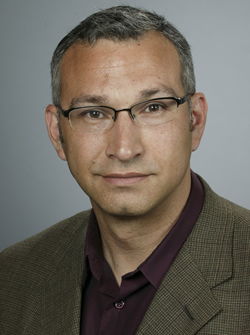 Omar Hurricane
Omar Hurricane Hurricane, chief scientist for the Laboratory’s inertial confinement fusion (ICF) program, received his B.S. in physics and applied mathematics from Metropolitan State University Denver and his M.S. and PhD in physics from the University of California, Los Angeles (UCLA). Before joining LLNL in 1998, he worked as a senior scientist at the UCLA Institute of Plasma & Fusion Research.
Hurricane’s research focuses on weapons physics, high energy density (HED) physics, the theory of plasmas, and plasma instability. In 2013, he led the NIF/Weapons and Complex Integration team in the development of the “high-foot” implosion process which led to the first fusion fuel gains exceeding unity on any facility. The experiments produced an order-of-magnitude improvement in yield performance over previous NIF shots as well as a significant contribution to the yield from alpha-particle self-heating, in which the alpha particles (helium nuclei) produced in the deuterium-tritium (DT) fusion process deposit their energy in the DT fuel. The alpha particles further heat the fuel, increasing the rate of fusion reactions and producing more alpha particles. This “bootstrapping” process is the mechanism required to accelerate the DT fusion burn rate to eventual self-sustaining fusion burn and ignition.
Hurricane has authored numerous journal publications and conference papers, largely in the area of plasma physics and HED physics. An LLNL Distinguished Member of the Technical Staff, he has received several awards and honors, including the U.S. Department of Energy Ernest Orlando Lawrence Award in 2009 for his work in national security and nonproliferation and six Department of Energy Defense Programs Awards of Excellence.
“I like trying to crack hard problems,” Hurricane said, “and trying to get fusion ignition using such a small amount of applied energy is a whopper of a hard problem. So, making some forward progress by applying a step-by-step systematic approach obtaining ‘fuel gain’ and significant alpha-heating, with a team of fun and hard-working colleagues, was very gratifying. I am very grateful to my colleagues and past mentors for their efforts in nominating me for this special honor.”
Vladimir Glebov, a senior scientist at the Laboratory for Laser Energetics (LLE) at the University of Rochester, was cited by the APS Topical Group on Instrument and Measurement Science for “the development and implementation of advanced neutron-based diagnostic systems on the National Ignition Facility and the OMEGA laser.”
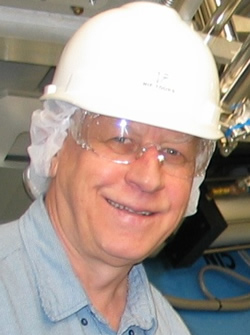 Vladimir Glebov
Vladimir Glebov Glebov received his M.S. in experimental nuclear physics from the Moscow Institute for Physics and Technology in 1971. He joined the Experimental Physics Division of the Institute for High Energy Physics in Protvino, Russia, and received his PhD in physics from the Institute in 1983. With the collapse of the Soviet Union, Glebov came to the United States in 1992 to help build the Superconducting Supercollider (SSC). When the SSC project was cancelled in 1993, he joined the physics and astronomy department at the University of Rochester, and was a member of the international team that first observed the top quark at the Fermi National Accelerator Laboratory in Illinois in 1995. He joined LLE in October, 1997, and was named a senior scientist in 2004.
At LLE, Glebov developed an expertise in neutron diagnostics, first for neutron measurements at LLE’’s OMEGA laser and later as a leader of the NIF neutron diagnostic development group. He made many contributions in the development of neutron time-of-flight (NTOF) detectors for OMEGA and NIF and pioneered the use of gated photo-multiplier tubes in NTOF detectors.
“Around 2005,” said Joe Kilkenny, chief NIF experimentalist for measurements, “it became apparent that the effort on NIF nuclear diagnostics needed to be increased. It was therefore natural that the LLNL diagnostics group turned to the best working scientist on nuclear diagnostics on lasers at the time, Vladimir Glebov. Vladimir was made the leader of the group of scientists and engineers working on developing the NIF neutron time-of-flight diagnostics.
“NIF now has its own nuclear diagnostic experts,” Kilkenny said, “but they stand on the shoulders of Vladimir, who led the NIF neutron time-of-flight diagnostic effort in its crucial machine commissioning phases.” Glebov received the NIF “Excellence and Integrity in Nuclear Diagnostics” award in 2011 for his contributions to the development of the NIF NTOF system.
“I consider my election as an APS Fellow to be a recognition of my 19 years of effort on behalf of OMEGA’s and NIF’s neutron diagnostic development,” Glebov said. “I am very happy that my contributions are so highly prized.”
Former LLNL postdoc and staff scientist Gianluca Gregori, now a professor of physics at the University of Oxford in the UK, was cited by the Division of Plasma Physics for “exploiting high-power lasers in innovative and novel ways to study the physics of inertial confinement fusion, the properties of warm dense matter as found in the interiors of giant planets and white dwarf stars, and the origin of magnetic fields in the universe.”
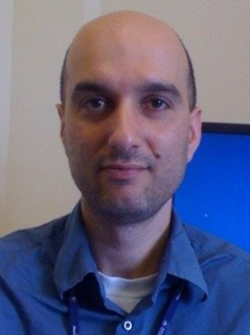 Gianluca Gregori
Gianluca Gregori Gregori, who holds an M.S. degree from the University of Bologna in Italy and M.S. and PhD degrees from the University of Minnesota, worked as a post-doctoral researcher in LLNL’s Fast Ignitor Physics group within the ICF program from 2001 until 2003, and was then appointed as a Laboratory staff scientist. From 2005 to 2007, Gregori held a senior experimental scientist position at the Rutherford Appleton Laboratory in the UK. In 2007, he was part of the team awarded a 2007 Daiwa Adrian Prize for its research into “High energy density science: new frontiers in plasma physics.”
He started at Oxford University in October 2007 as a Research Councils UK Fellow in the Department of Atomic and Laser Physics. In 2012 he became Fellow and Tutor of Physics at Lady Margaret Hall, and in 2013 he was appointed Professor of Physics. His research interests cover laboratory astrophysics with high-power lasers, dense plasmas as found in the interior of stars and planets, and ICF energy.
“I am very grateful for everything I learned while at LLNL,” Gregori said. “Indeed, I was very fortunate to work under both (NIF & PS physicist) Nino Landen and (plasma physicist) Siegfried Glenzer (now at the SLAC National Accelerator Laboratory) who gave me an exciting project on warm dense matter. And LLNL was also the place where I discovered that lasers can be used to study astrophysics.”
John Kline, a staff scientist at Los Alamos National Laboratory (LANL) who has conducted a wide variety of experiments on NIF, was cited by the Division of Plasma Physics for “seminal contributions to the understanding and development of hohlraum drivers for inertial confinement fusion and their use for radiation transport, hydrodynamic, and ignition science experiments.”
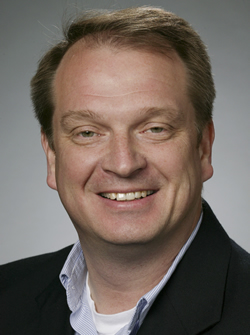 John Kline
John Kline Kline, a LANL staff scientist since 2005, is responsible for fielding high energy density experiments at NIF and other high-energy lasers including LLNL’s Titan laser, the OMEGA laser at the University of Rochester, the Trident laser at LANL, and the LULI laser in France. The experiments cover a range of topics from ICF and laser-matter interactions to astrophysics.
Kline received his PhD from West Virginia University in 2002 and became a postdoctoral researcher in the LANL Plasma Physics group. In 2005 he was converted to a technical staff member, and in 2006 became a project leader for the ICF Program.
“Being part of bringing the NIF online for experiments was the greatest opportunity in my career and one of the most exciting times in my life,” Kline said. “The NIF is truly incredible. I feel that this honor is more a reflection of the great people with whom I have collaborated on ICF and HED experiments, the operations personnel that supported the experiments, the target fabrication team, as well as both LANL and LLNL management who have supported my involvement in the work than it is on myself.”
Three other LLNL scientists also were named 2016 APS Fellows:
Adam Bernstein was cited by the Division of Nuclear Physics for “pioneering work at the intersection of nuclear science and nuclear nonproliferation, including the development of antineutrino-based methods for monitoring the production of fissile material and large volume detectors for rapid screening of cargo for the presence of fissile material.”
Hui Chen was cited by the Division of Plasma Physics for “pioneering experimental research on relativistic positron generation using ultraintense short-pulse lasers.”
Jim Trebes was cited by the Forum on Physics and Society for “contributions in laser physics and the application of physics to other disciplines, for leadership in multiple national security areas, and for contributions to education in the sciences and engineering.”
Ibo Matthews Presents at Black Physicists Conference
Manyalibo (Ibo) Matthews represented LLNL at the National Society for Black Physicists (NSBP) Fall Conference held Oct. 27-30 at Fermilab in Batavia, Illinois. The NSBP is the largest academic meeting of minority physicists in the United States.
This year’s three-day conference was geared toward students. A collaboration of DOE National Laboratories and universities, the conference brought together a broad range of experts in multiple fields of physics, from astronomy and astrophysics to high-energy physics, condensed-matter physics, materials science, and biophysics. The theme, “The Value of the Minority Physics Student: A Talent Source for America’s Technical Future,” was chosen this year to empower minority physics majors.
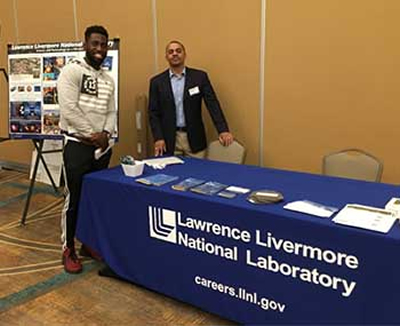 Ibo Matthews (right) mans the LLNL table at the National Society for Black Physicists Fall Conference.
Ibo Matthews (right) mans the LLNL table at the National Society for Black Physicists Fall Conference. The conference, designed to help participants navigate the next steps that advance their careers, attracted more than 150 students from across the nation for professional development and networking with representatives from DOE national laboratories and universities. The conference provided professional development programs for undergraduate and graduate students, postdoctoral fellows, and junior faculty through oral and poster sessions, workshops, breakout sessions for student-researcher interactions, mentoring opportunities, social networking activities, and tours of Fermilab.
Matthews, deputy group leader in the Target Science and Optical Materials Capabilities Group within the Materials Science Division of the Physical and Life Sciences Directorate (primarily matrixed to the NIF & Photon Science Directorate), gave a short presentation, providing a taste of the technical work performed at the Laboratory and touching on available internship and postdoc opportunities.
“I shared my own experience with the participants and encouraged them to get involved and get engaged," he said. “I applauded them for taking the first step, just by being here.”
Matthews also engaged with students while manning an LLNL recruiting table at the National Laboratories “Reverse Science Fair” session, and answered questions and provided mentoring during a breakout session similar to speed dating.
“I interned with a high-energy physics group at Fermilab for two years in the 1990’s as an undergrad helping with experiments,” Matthews said. “Coming back here was very nostalgic for me. I really enjoyed talking to the students and met many with great promise, some particularly well suited for the Lab’s missions.”
Matthews enjoys serving as a role model to others interested in pursuing a career in physics or other scientific disciplines. “I believe in leading by example,” he said. “When others see you doing something, and they can relate to who you are, it can give them confidence in doing it themselves.”



